
Understanding and leveraging your competitors’ marketing strategies can be the move that propels your brand to the forefront. It’s a practice as old as commerce itself but has taken on new complexities and importance. Recent studies highlight that businesses that actively engage in competitor analysis enjoy a significant edge, often outperforming their peers by margins that can’t be ignored. This journey of competitive enlightenment isn’t about copying or outspending. It’s about smart, strategic actions that drive your business forward by learning from the landscape around you.
Peeking into the playbook of your competitors isn’t about uncovering trade secrets or indulging in corporate espionage. It’s a legitimate strategy for staying agile in a market that never sleeps. The core idea? To see what’s working for others and figure out how you can do it better, differently, or more efficiently. Every tweet they send, every product launch they execute, and every campaign they run can offer insights into what might work for your brand as well.
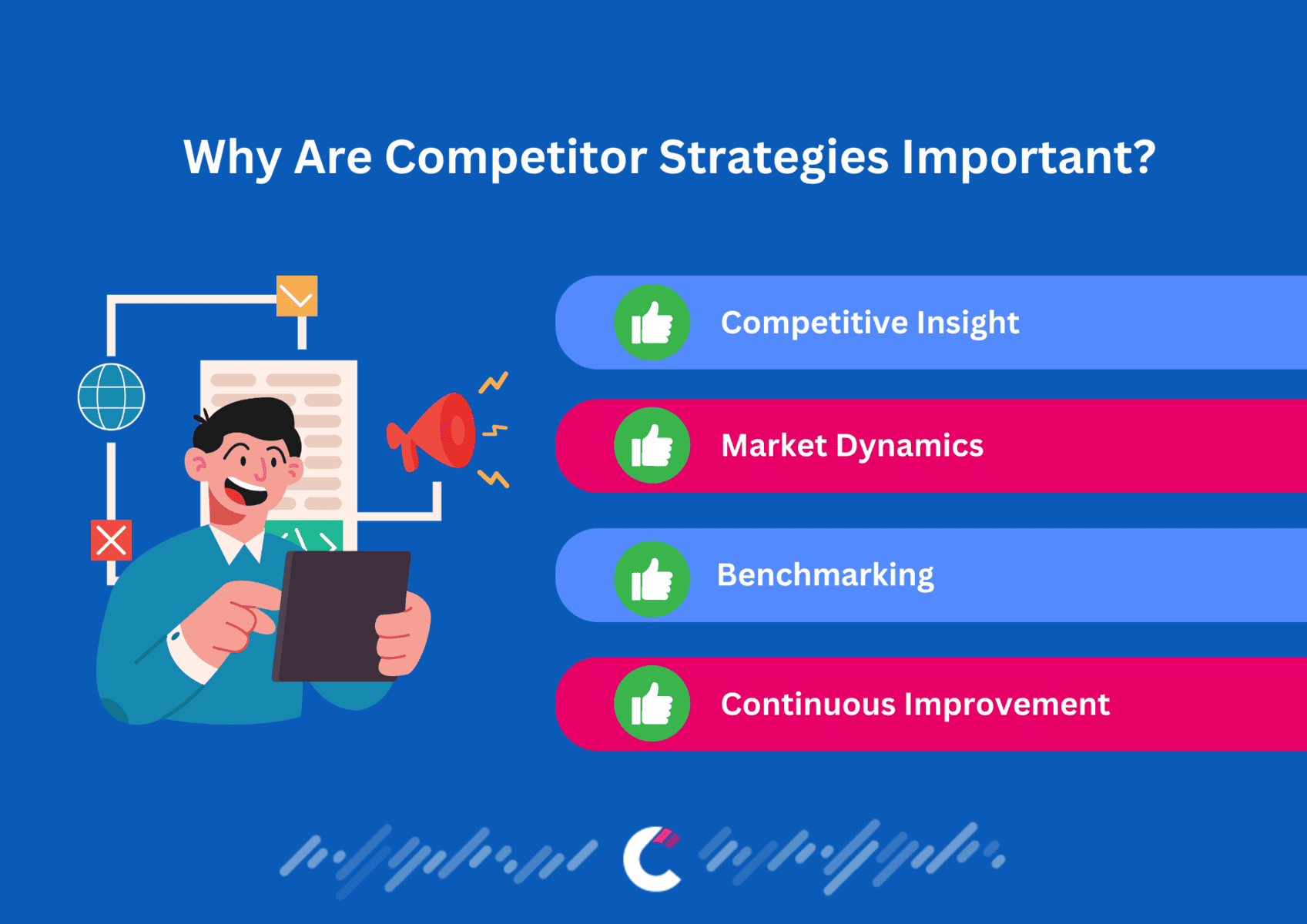
Gaining a strategic edge in today’s competitive marketplace involves a thorough understanding of your competitors’ tactics. By diving deep into their strategies, businesses can harness several benefits that not only safeguard but also enhance their market position. Here’s how:
Identifying your competitors is a fundamental step in honing your competitive edge. This process involves more than just pinpointing businesses that offer similar products or services. It requires a detailed analysis to understand the nuances of your market landscape and the players within it. Here’s how you can effectively identify your competitors:
Analyzing your competitors’ marketing strategies provides critical insights that can help refine your approach and capitalize on market opportunities. This process involves a thorough examination of their tactics across various channels and platforms. Here’s how to conduct a comprehensive analysis:
1. Digital Presence: Start by reviewing their website and online user experience. Look at the website design, content quality, navigation ease, and the types of engagement features they use, such as chatbots or interactive tools. Assess their search engine optimization (SEO) effectiveness by noting which keywords they rank for and their overall online visibility.


2. Social Media Activity: Examine their social media profiles across platforms like Facebook, Instagram, LinkedIn, and Twitter. Note the frequency of their posts, the content’s nature, engagement rates, and how they interact with their audience. Social media analytics tools can provide deeper insights into their performance metrics and audience behavior.


5. Customer Interaction and Service: Review how they manage customer interactions, including response times on social media, the quality of customer support, and public feedback or reviews. This can give you insights into their customer service effectiveness and overall brand reputation.


7. Promotions and Pricing Strategies: Keep track of any promotions, discounts, or loyalty programs your competitors offer. Analyze their pricing strategies to see if they position themselves as a budget, mid-range, or premium brand.

Tracking your competition is an ongoing process that allows you to stay updated with the latest developments and strategic moves in your industry. It involves monitoring various aspects of competitor behavior and market dynamics to keep your business agile and proactive. Here’s how to effectively track your competition:

This tool focuses specifically on monitoring competitors' marketing activities across various digital platforms including social media, newsletters, and website updates. Competitors.app is particularly useful for businesses that want to keep a close eye on the real-time strategic moves of their rivals.

This is a comprehensive tool that offers features for SEO, PPC, content, social media, and competitive research. SEMrush is particularly valuable for tracking competitors' keywords, backlinks, and ad strategies.

Known for its powerful backlink analysis capability, Ahrefs also provides competitive analysis features that help you see where your competitors are getting traffic from and how they are ranking for various keywords.
Monitoring your competitors’ marketing strategies is essential for maintaining a competitive edge. This involves keeping an eye on their social media activities through platforms, tracking email and content updates and observing changes on their websites. Additionally, analyzing their ad campaigns provides insights into their messaging and targeting strategies. SEO and keyword tracking can reveal which keywords are driving traffic to their sites, helping you to refine your SEO efforts. Sentiment analysis allow you to understand public perceptions and identify areas where competitors might be excelling or falling short. Implementing specialized, which aggregates data on various marketing activities including social media updates and email campaigns, can also provide comprehensive insights. Regularly engaging in these monitoring activities helps you stay informed about industry trends, anticipate market changes, and adapt your strategies accordingly to stay ahead.
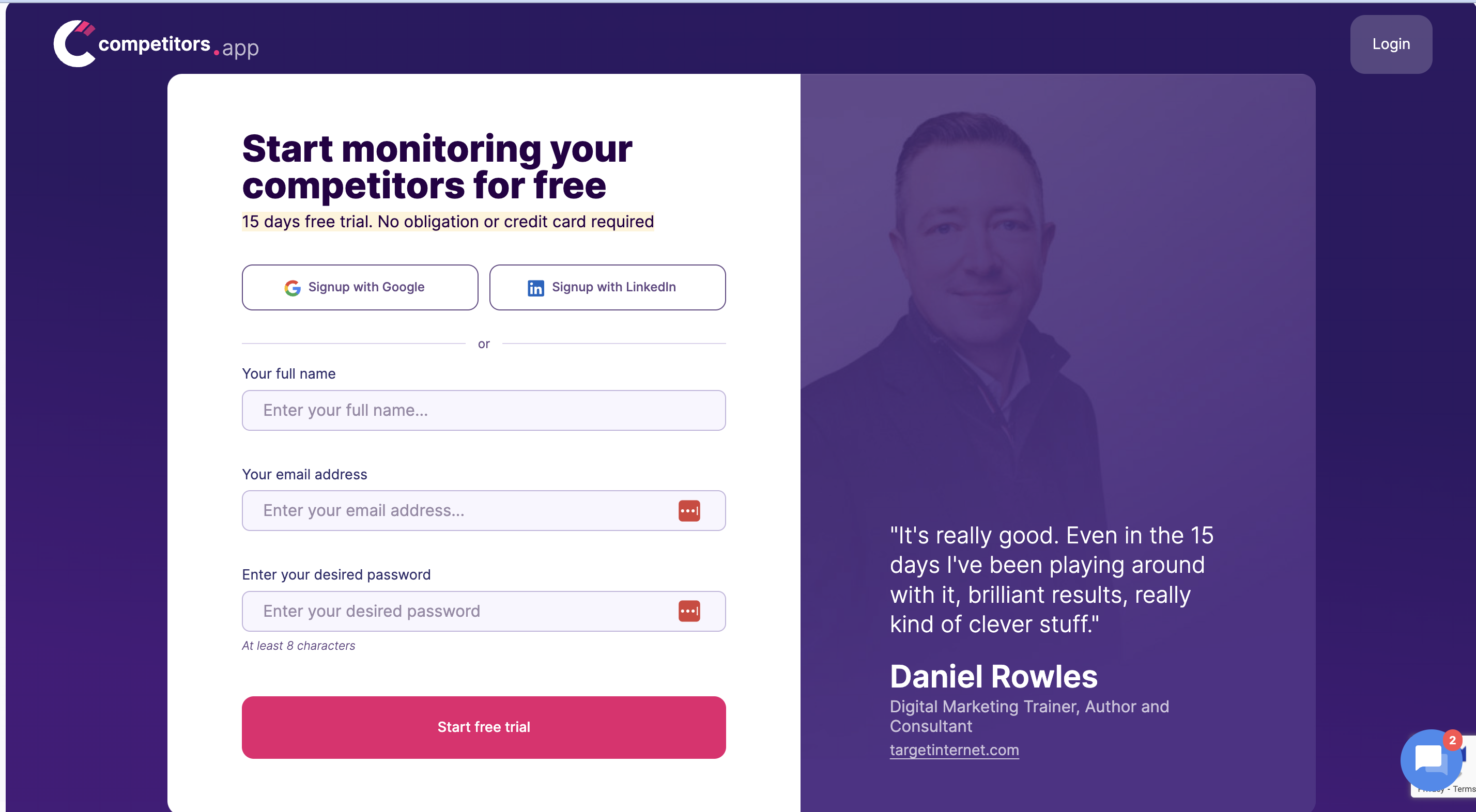
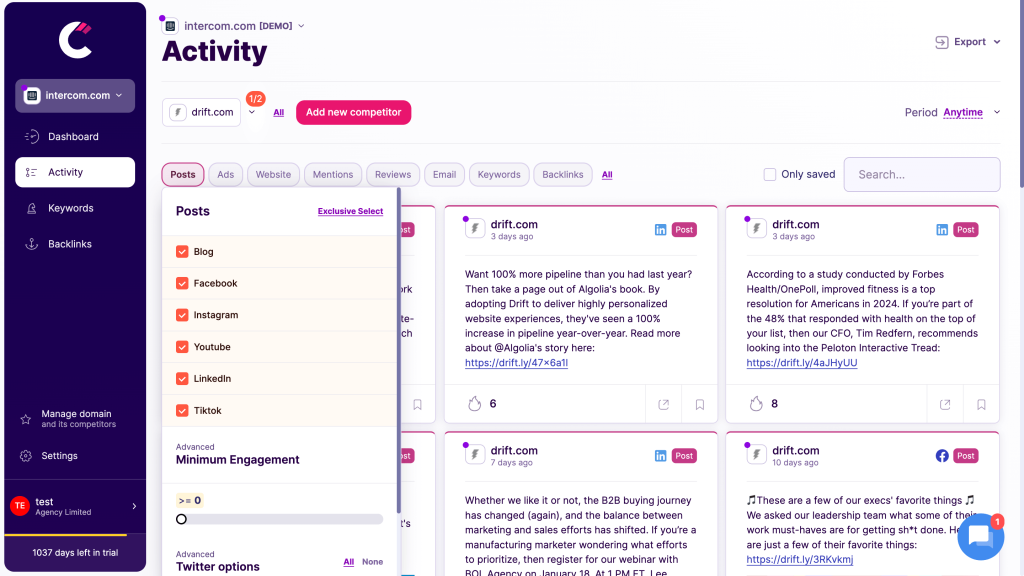
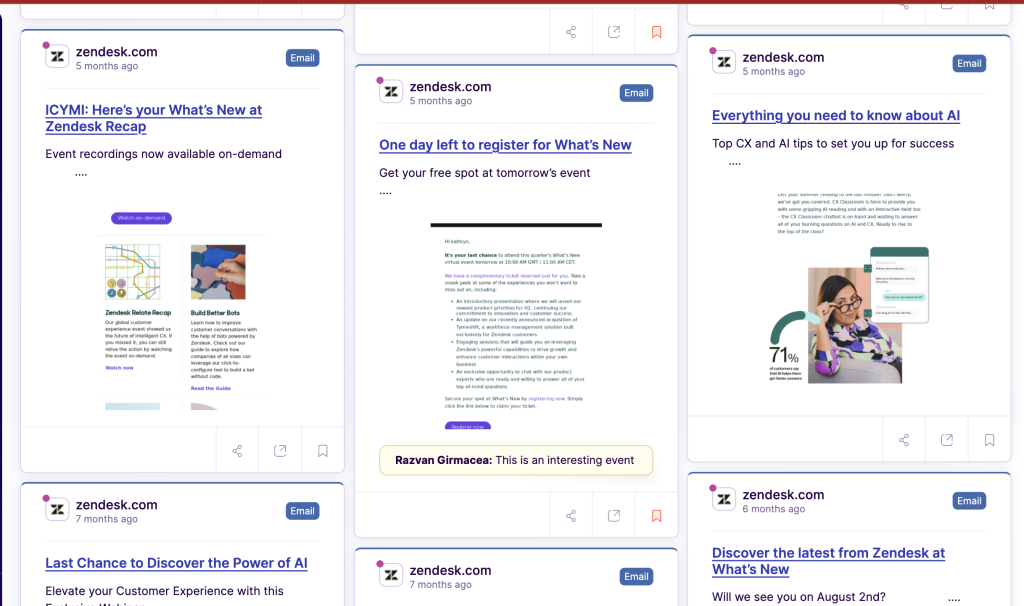
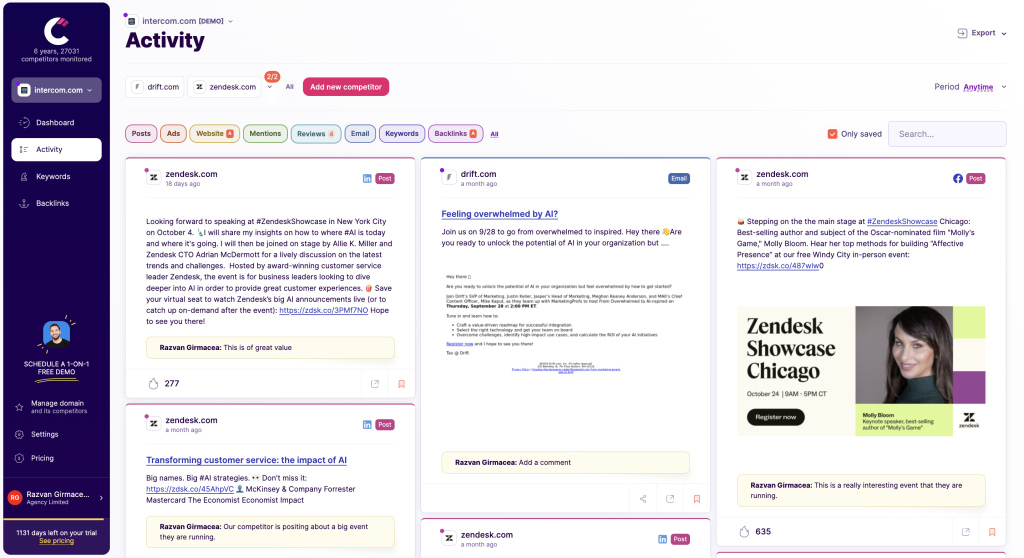

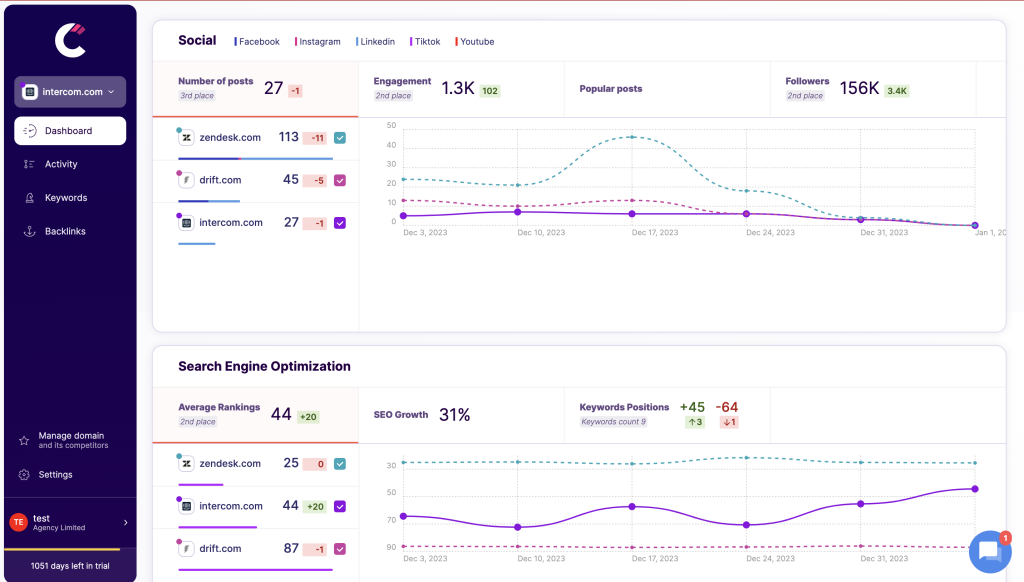
4. Website Changes: Competitors.app provides alerts for any changes on your competitors’ websites. Whether they update their product listings, pricing, or publish new content, you’ll receive notifications about these changes, allowing you to react quickly to any new strategies they might be implementing.
6. Generate Reports: Competitors.app can compile the collected data into comprehensive reports, providing you with insights and trends over time. These reports can be crucial for strategic meetings and decision-making processes, offering a clear view of how your competitors are positioning themselves in the market.
Gathering actionable insights from the data collected on your competitors’ activities is crucial for making informed strategic decisions. This process involves translating raw data into valuable information that can guide your marketing strategies and business operations. Here’s how you can leverage this data for informed choices:
Benchmarking against competitors involves strategic comparisons between your business and industry leaders to identify performance gaps and growth opportunities.
Start by selecting essential metrics that reflect your industry’s standards and your business objectives, such as sales growth, market penetration, and customer loyalty.
Next, delve into the strategies that successful competitors are employing. Analyze their business practices, marketing initiatives, customer service techniques, and technological advancements to understand what contributes to their success.
Based on these comparisons, set specific and achievable goals aimed at not just catching up with, but surpassing, competitors. Develop targeted action plans to enhance aspects of your business where you currently lag, such as adopting new marketing strategies, refining product offerings, or improving customer service, drawing inspiration from successful practices observed in your industry.
Continuously track the effectiveness of your implemented strategies by regularly updating your data and reassessing your competitive position. Keep stakeholders informed through regular updates, and remain flexible to adapt strategies as market conditions evolve. This proactive and dynamic approach to benchmarking will help ensure your business remains competitive and can lead in innovation and market presence.
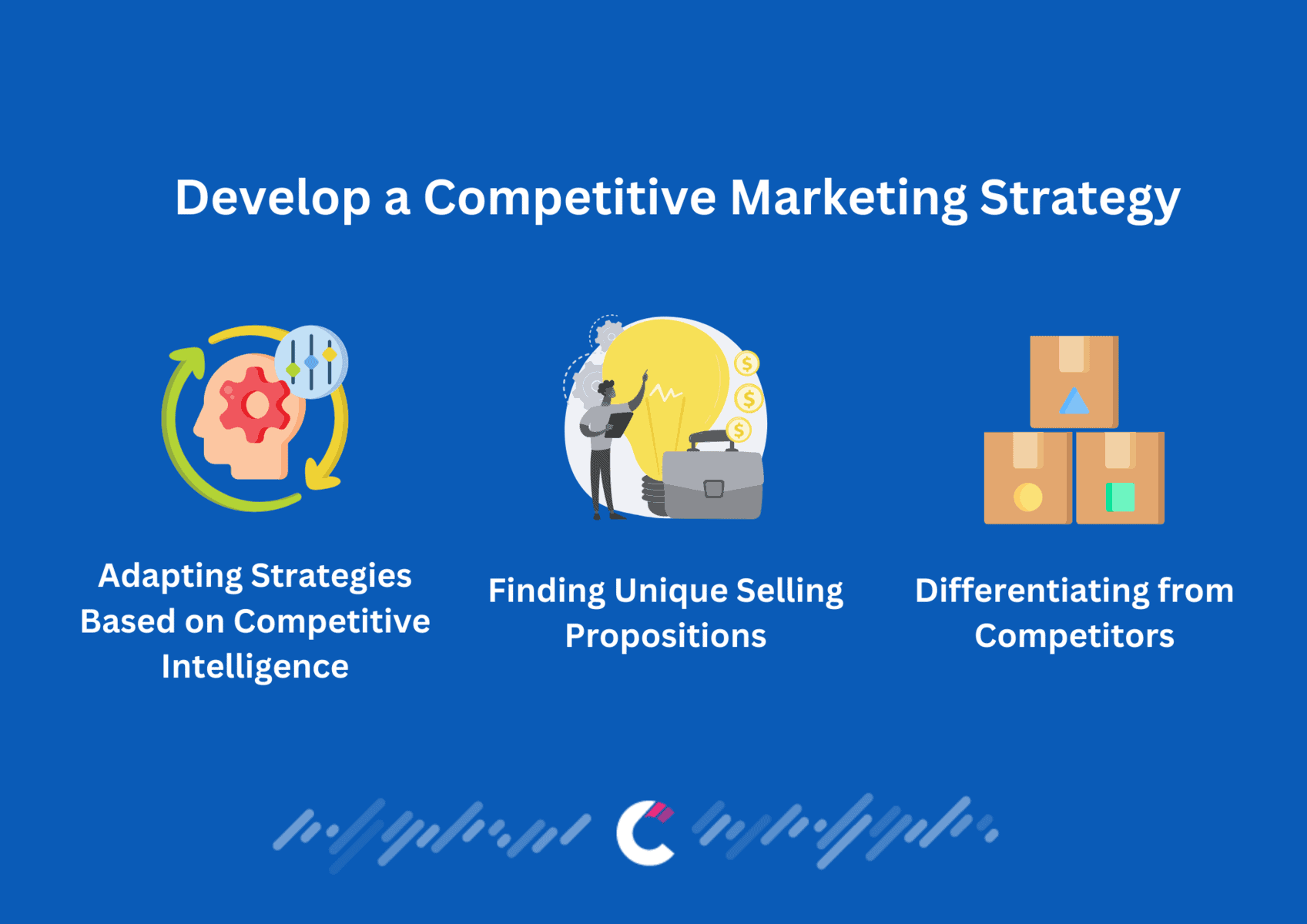
Developing a competitive marketing strategy is essential for businesses aiming to stand out in a crowded marketplace. This strategy should be informed by competitive intelligence and focus on establishing unique selling propositions (USPs) and differentiating from competitors. Here’s how to craft a marketing strategy that not only competes but excels.
Begin by harnessing the power of competitive intelligence. Gather and analyze data on your competitors’ marketing tactics, customer interactions, product innovations, and market positioning. Use this information to identify both successful strategies and areas where competitors are falling short. Adapt these insights into your planning by enhancing your strengths and seizing opportunities where competitors are weak. For instance, if your analysis reveals a competitor’s weak customer service but strong product offering, focus on providing superior customer service to win over their dissatisfied customers.
Identifying and clearly defining your unique selling propositions is crucial. USPs are key features or benefits of your products or services that distinguish your brand from its competitors. These could be anything from a proprietary technology, superior craftsmanship, a unique ingredient, or exceptional service. Analyze market needs and competitor offerings to pinpoint gaps that your business can fill. Then, craft your marketing messages around these USPs to highlight the unique benefits only your brand offers.
Differentiation is about more than just having a unique product or service; it’s about ensuring that every aspect of your brand experience stands out from the competition. This could involve innovative packaging, a unique brand voice, exceptional customer service, or a revolutionary pricing strategy. Think about what your competitors are doing and ask yourself how you can do it differently — not just better. This approach should permeate every facet of your company, from the way you market your products to how you handle customer complaints.
By systematically applying these strategies — leveraging competitive intelligence, establishing clear USPs, and ensuring broad differentiation — your business can develop a robust marketing strategy that captures attention and sustains growth. This approach not only positions your brand favorably within the competitive landscape but also resonates deeply with consumers, encouraging loyalty and advocacy.
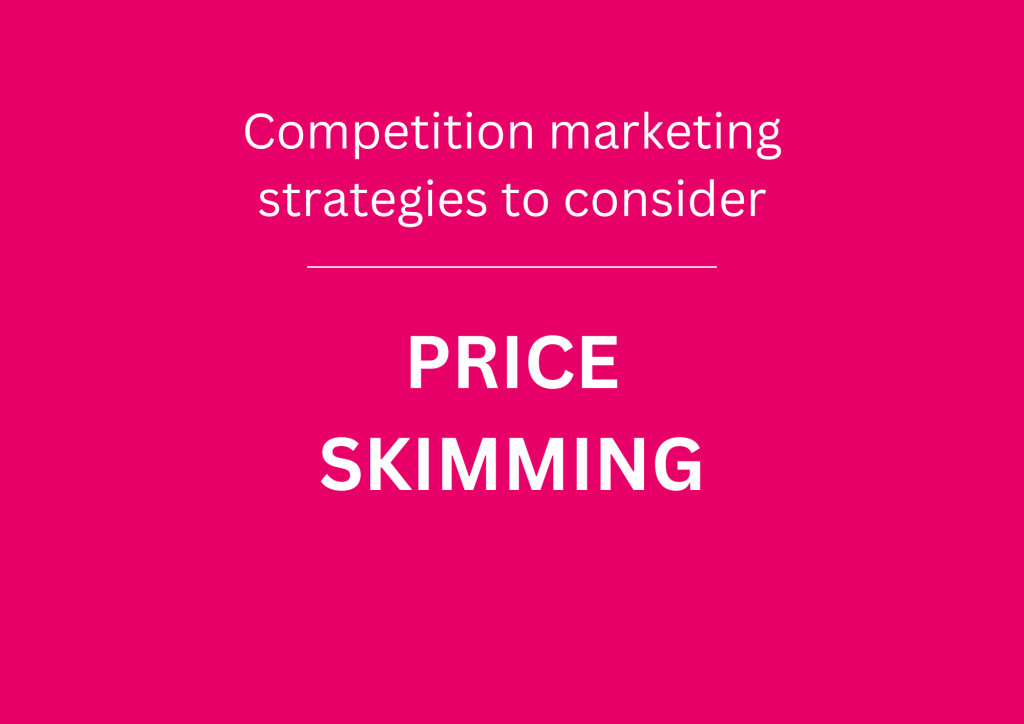
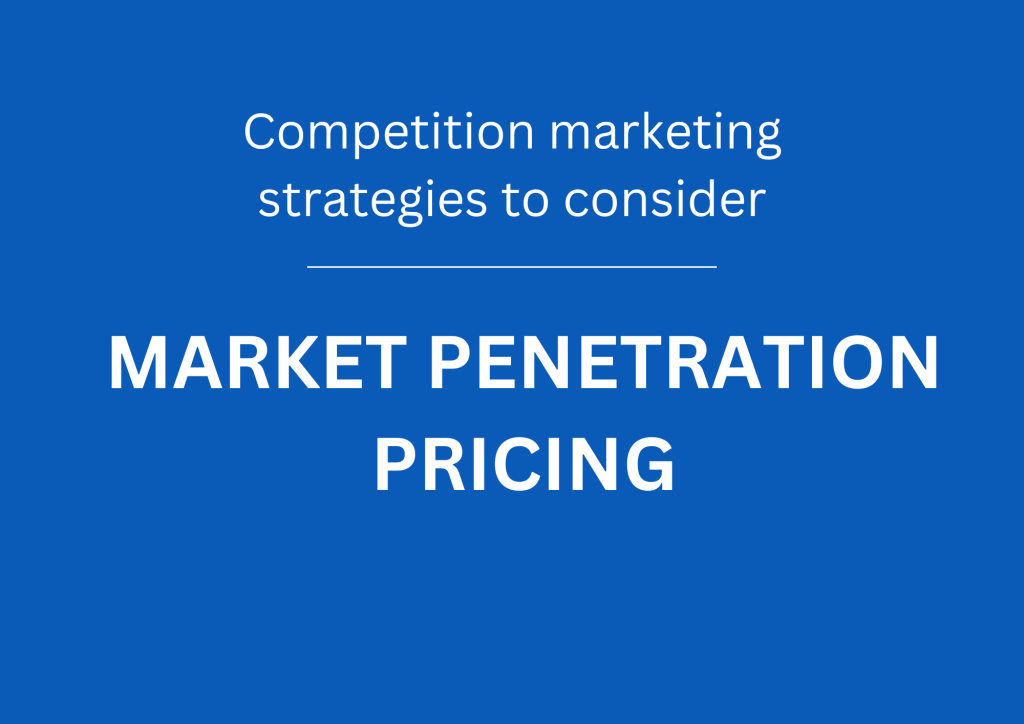


Adhering to ethical practices is not just a legal obligation but a strategic asset that can enhance your brand’s reputation and customer loyalty. Ethical competition involves engaging in fair practices that respect both the rules of the industry and the rights of competitors and consumers. Here’s why ethical competition is essential and how it can be integrated into your business strategy.
To ensure your company competes ethically, consider the following steps:
– Develop Clear Ethical Guidelines: Create and implement a set of ethical guidelines that outline how to handle various business situations, especially those involving competitors. Make sure these guidelines are well communicated and understood within the company.
– Train Employees: Regular training on ethical practices and competition laws is crucial. Employees should understand not only what is expected of them but also the implications of unethical behavior.
– Monitor and Enforce Compliance: Establish mechanisms to monitor compliance with ethical standards and take corrective action when necessary. This could include setting up an anonymous reporting system for ethical breaches.
– Lead by Example: Leadership should exemplify ethical behavior in all interactions. Ethical business practices should be a key part of the corporate culture, championed from the top down.
– Engage in Fair Marketing Practices: Ensure that all marketing and advertising efforts are truthful and fair. Avoid misleading claims and respect intellectual property rights.
Incorporating ethical practices into your competitive strategy not only avoids risks but also enhances the overall value of your brand. By fostering a culture of fairness and responsibility, you can differentiate your business and achieve sustainable success.
It’s advisable to reassess your competitor strategies regularly, typically every quarter. However, the frequency can vary depending on the pace of change within your industry. High-velocity sectors, like technology or fashion, may require more frequent reviews. Keep an eye on any major shifts in the market or significant moves by competitors to determine if an earlier reassessment is necessary.
Yes, there are several free tools available to study competitors' marketing strategies. Tools like Google Alerts for monitoring mentions, Ubersuggest for SEO insights, and Social Mention for social media presence are accessible without cost and can provide valuable information about your competitors’ activities.
The best competition marketing strategy depends on your specific market position, resources, and objectives. Strategies like differentiation, cost leadership, or focus strategies (targeting a niche market) are commonly effective. Analyzing your competitors' strengths and weaknesses will help you determine which strategy will best position your business for success.
Technology plays a crucial role in competitive intelligence by providing tools and platforms that gather, analyze, and manage data about competitors. From AI-driven analytics platforms to digital monitoring tools, technology enables businesses to quickly understand market dynamics and predict competitor moves with greater accuracy.
Small businesses can compete with industry giants by leveraging their agility, focusing on customer service, and targeting niche markets. Innovating unique products or services and employing a localized approach can also help small businesses distinguish themselves from larger competitors.
Unethical competitive practices can lead to serious risks including legal penalties, damaged reputation, and loss of customer trust. These practices can result in costly litigation, regulatory fines, and can ultimately jeopardize business sustainability.
Competitors App SRL
support at competitors.app
Sanzienelor 3, Sibiu, Romania
+1 (302) 208-7954